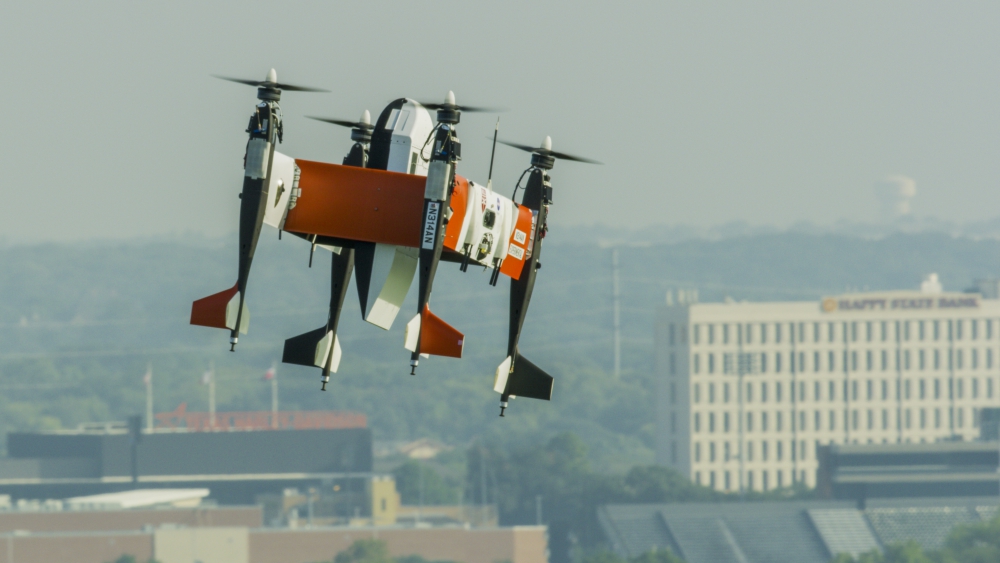A vision of what future critical medical response could look like was simulated on NASA’s second flight of the Systems Integration and Operationalization (SIO) demonstration Sept. 28 with partner Bell Textron Inc..
The SIO demonstration activity is a partnership with the FAA and industry partners to conduct demonstrations of potential commercial applications using different sizes of unmanned aircraft systems (UAS). SIO aims to accelerate the safe integration of UAS for commercial applications into the National Airspace System by tackling key challenges UAS operations face.
The Bell Autonomous Pod Transport 70 (APT 70) UAS flew for 10 minutes from Bell’s facility on Floyd Carlson Field, near Fort Worth, Texas. The aircraft was operated by a remote pilot based at the ground control station.
Bell used the APT 70 to conduct a flight representing an urgent medical transport mission. It is envisioned in the future that an operational APT 70 could provide rapid medical transport for blood, organs and perishable medical supplies (payloads up to 70 pounds). The APT 70 is estimated to move three times as fast as ground transportation.
“This demonstration is a step on the path toward certification of commercial UAS operations,” said Kurt Swieringa, NASA SIO technical manager. “Services such as urgent medical supply transportation can be beneficial to the public and can highlight the positive use cases commercial UAS operations provide.”
The flight path took the APT 70 over the sparsely populated Trinity River and surrounding land near the Dallas Fort Worth International Airport in Class B Airspace, which includes residential areas and highways. Complex coordination and approvals with the FAA and local authorities was required for the flight to occur.
Bell’s subcontractors include Xwing and the University of Massachusetts Amherst’s Center for Collaborative Adaptive Sensing of the Atmosphere (CASA). Xwing integrated a multi-sensor Detect and Avoid (DAA) system to allow the pilot on the ground to “see and avoid” other air traffic. This works alongside Bell’s Command and Control (C2) system used to communicate with air traffic controllers who are monitoring and directing piloted aircraft. CASA’s displays provide local weather risk awareness and route-based weather alerts. Data was collected from these systems to compare effectiveness to visual observers, which were in place for this demonstration to ensure the safety of the public and the airspace.
NASA’s role in SIO is to leverage years of research in DAA and C2 systems to facilitate discussions and provide technical insight as technology and policy evolve.
The goal is to work with industry to help incentivize the creation of C2 and DAA systems based on standards informed by years of NASA research under the Unmanned Aircraft Systems (UAS) Integration in the National Airspace System (NAS) project. DAA and C2 are key systems needed to enable the safe integration of UAS into the NAS.
SIO’s other industry partners are General Atomics Aeronautical Systems Inc. (GA-ASI) and American Aerospace Technologies Inc. (AATI). GA-ASI completed their demonstration activity in April and AATI is expected to follow Bell. All flight demonstrations will be at altitudes above 500 feet.
NASA plans to document best practices and lessons learned from the SIO activity and provide it to the UAS community to increase industrywide progress toward routine commercial unmanned aircraft operations.
Source: Press Release

